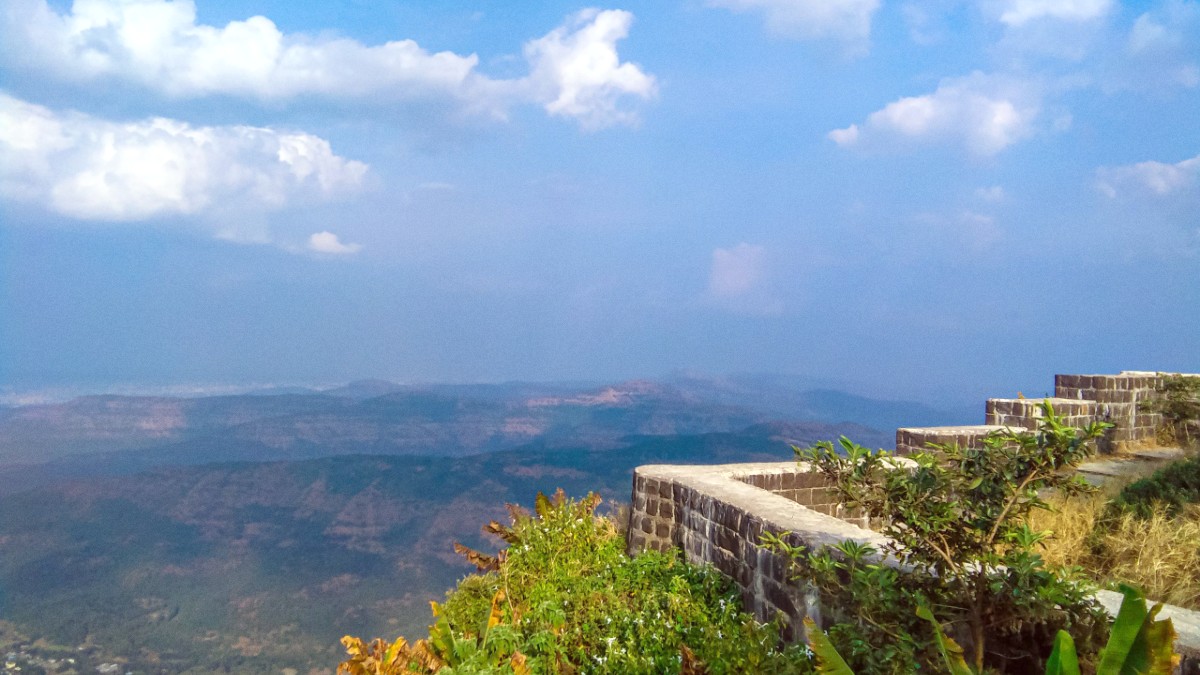
Maharashtra, India
Summer (March to May): This period is hot and dry. Temperatures typically range from 25°C to 40°C (77°F to 104°F). Temperatures can go above 40°C (104°F) in May. Humidity is lower during these months.
Monsoon (June to September): Heavy rainfall characterizes this season. Temperatures average 22°C to 30°C (72°F to 86°F). Humidity is high.
High Season (October to March): Pleasant weather. Clear skies and moderate temperatures are good for exploring forts and gardens. Accommodation prices are higher, and popular attractions have more crowds. Book lodging and popular train tickets well in advance.
Shoulder Season (March to May): Fewer tourists and potentially lower prices for hotels and flights. Extreme heat and humidity can make outdoor activities uncomfortable, especially midday. Plan indoor activities or early morning/late evening excursions.
June to September
Landscapes turn lush green, waterfalls are fullest. Off-peak pricing for hotels.
Heavy rainfall can impact outdoor plans, cause traffic disruptions, and lead to localized flooding.
July-August
Lush scenery and gushing waterfalls around Pune (e.g., Lonavala). Carry rain gear.
Heavy, intermittent rains. Roads to certain hill forts might become slippery.
April and May
Stay hydrated by drinking plenty of fluids. Temperatures above 38°C (100°F) are possible.
Avoid prolonged sun exposure during the hottest parts of the day.
October to February is good due to mild weather. Explore historical sites and the surrounding hills comfortably.
The monsoon season (July-August) presents lush scenery and gushing waterfalls around Pune, like those near Lonavala or Tamhini Ghat. Prepare for rain and slippery conditions.
Historical sites, cultural events, hill treks.
Indoor attractions, early morning/late evening city exploration.
Waterfall visits, lush green landscapes, indoor cultural events.
October to March for outdoor activities.
June to September for budget-friendly travel.
Understand the visa and entry requirements before planning your trip to India. Requirements vary based on your nationality and the purpose of your visit.
Citizens of many countries qualify for an e-Visa for tourism, business, and medical purposes. The application process is entirely online. Apply for the e-Visa several weeks before your travel date.
Apply for a regular tourist visa through Indian Embassies or Consulates in your country of residence. This process may require an in-person interview and can take longer than an e-Visa. Check specific requirements for your nationality.
If you experience flight delays or cancellations, services like AirHelp can assist in claiming compensation. They help passengers receive up to €600 for eligible disruptions.
Prices can vary significantly based on your travel style.
Currency: Indian Rupee (INR). Banknotes in 10, 20, 50, 100, 200, 500, and 2000 INR. Coins in 1, 2, 5, and 10 INR.
Exchange: Currency exchange counters at Pune International Airport (PNQ). Major banks (State Bank of India, HDFC Bank, ICICI Bank) offer exchange services. ATMs are widely available for cash withdrawals. Inform your bank before travel.
INR 1,500 - 2,500 (approx. USD 18-30) daily. This covers a hostel dormitory bed or very basic guesthouse, meals from street food vendors, public transport, and minimal entry fees.
Economical lodging and food choices.
Limited luxury or private transport options.
INR 3,000 - 6,000 (approx. USD 36-72) daily. This includes a mid-range hotel, meals at local restaurants, ride-sharing services (Ola/Uber) for transportation, and entry to main attractions.
Comfortable accommodations and varied dining.
Some premium experiences may need a higher budget.
INR 7,000+ (approx. USD 84+) daily. This covers 4-5 star hotels, fine dining, private taxis or chauffeured cars, and guided tours.
High comfort and convenience for all activities.
Budget increases with more exclusive experiences.
| Category | Item | Price Range (INR) |
|---|---|---|
| Accommodation | Hostel Dorm Bed | 500 - 900 (Per night) |
| Accommodation | Mid-range Hotel | 3,000 - 5,500 (Per night) |
| Meals | Street Food Meal | 50 - 150 (Per person) |
Understand the health risks and safety precautions relevant to the region.
Yellow Fever vaccination certificate if arriving from or transited through a Yellow Fever endemic country within 6 days.
Hepatitis A and B, Typhoid, Tetanus, Diphtheria, Pertussis (Tdap), MMR, Polio, Rabies (for high-risk activities).
Consult a healthcare professional well before your travel for personalized advice.
Traveler's Diarrhea:
Drink only filtered or sealed Bottled water. Avoid ice, unpeeled fruits, raw vegetables. Use Hand sanitizer before eating.
Mosquito-borne Diseases: Dengue, Malaria present. Use Insect repellent (DEET/Picaridin). Wear long sleeves/pants. Consider a Mosquito net if needed.
Heatstroke/Dehydration: During summer, stay hydrated. Wear lightweight clothing. Avoid prolonged sun exposure.
Reputable private hospitals: Apollo, Ruby Hall Clinic, Jehangir, Sahyadri, Deenanath Mangeshkar. English-speaking staff.
Widely available ("Medical Store" / "Chemist"). Common medications often without prescription.
Police: 100, Fire: 101, Ambulance: 102.
Pune is generally safe for travelers. Petty crime like pickpocketing and bag snatching can occur in crowded areas. Stay aware of your surroundings, especially in markets, bus stations, and railway stations.
Drink only sealed bottled water or water that has been boiled or filtered. Avoid tap water, even for brushing teeth.
Eat only hot, freshly cooked food. Avoid salads, raw fruits unless peeled yourself.
Choose busy street food stalls; high turnover usually means fresh food.
Avoid ice cubes. Consider a Filtered and purified water bottle.